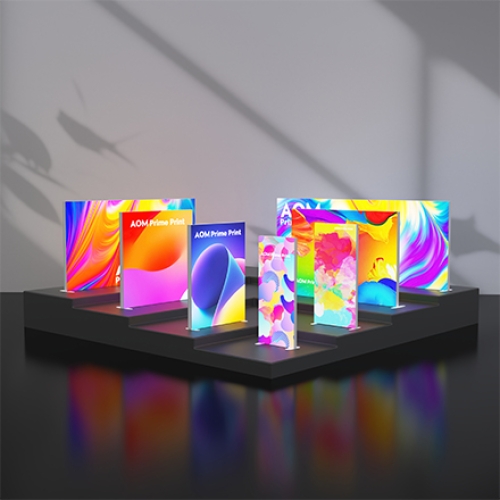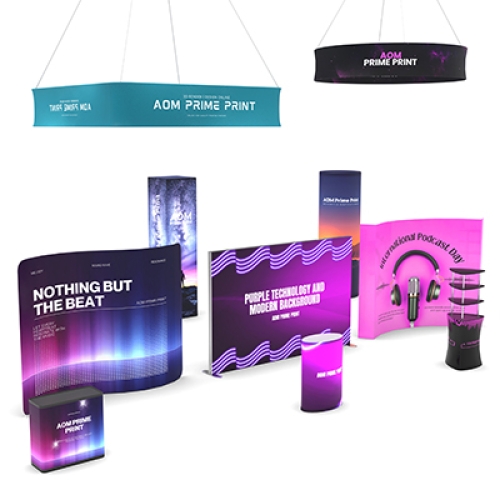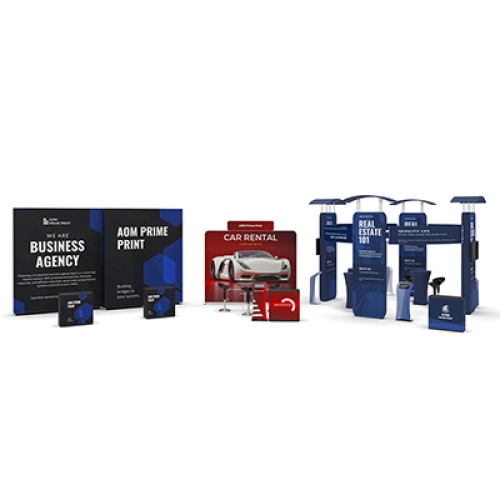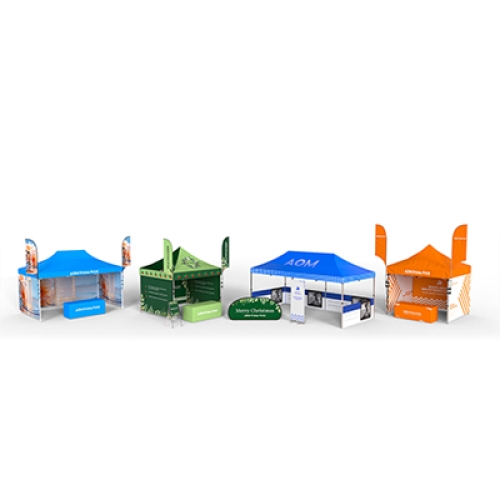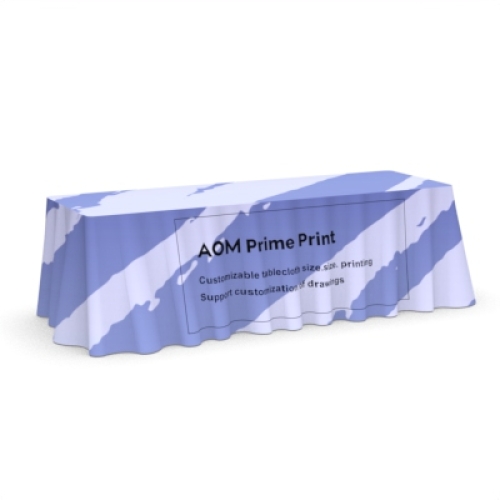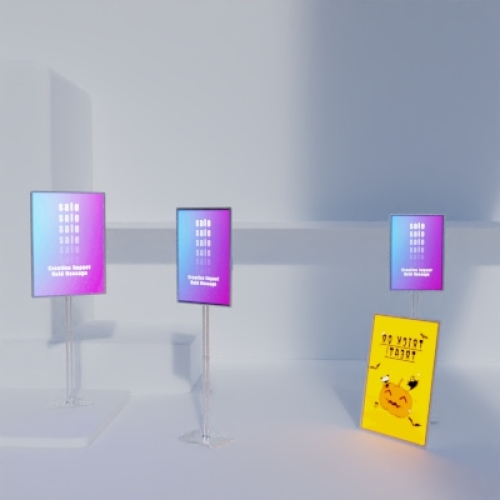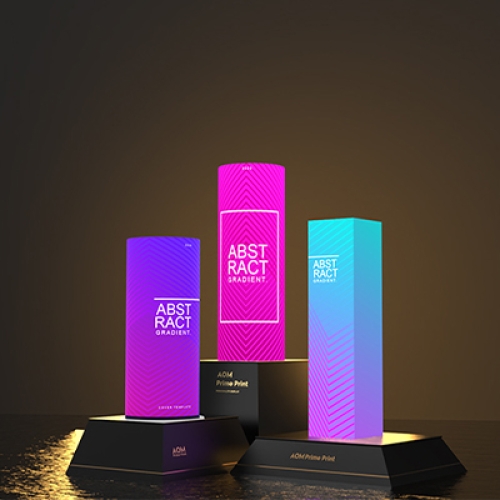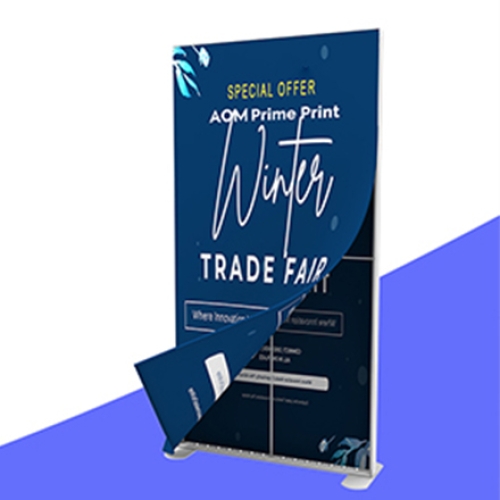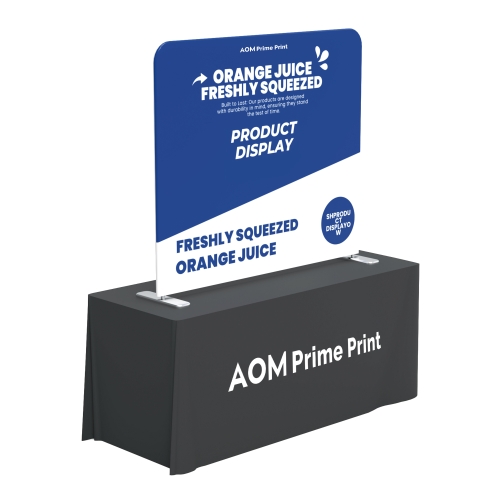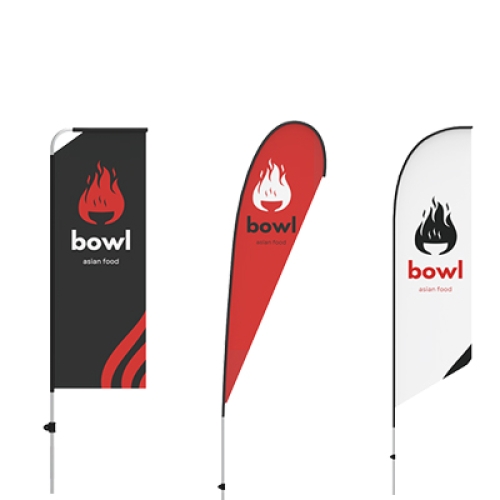How to Choose the Right Trade Show Display: Backlit vs. Non-Backlit Displays
January 6th 2025
If you've ever attended a trade show, you’ve probably noticed the variety of display setups. Most booths use the usual banners, counters, and stands, but every once in a while, you’ll come across a display that seems to glow. From a distance, you might wonder: Is it an LED wall? A digital screen? Or perhaps something else?
Chances are, you’re looking at a backlit display. These displays typically consist of a metal frame with custom-printed fabric stretched over it, and internally, they feature a lighting system, usually LED, that illuminates the graphic from behind. Backlit displays have become increasingly popular at trade shows in recent years, and for good reason. In this article, we'll break down the differences between backlit and non-backlit displays, outlining their pros and cons to help you make an informed choice.、
What is a Backlit Display?
At its core, a backlit display is fairly simple in structure: it consists of a metal frame, a tension fabric graphic, and embedded LED lights. The LED lights are evenly distributed behind the fabric to provide a smooth, consistent glow that enhances the visibility of the design. The fabric itself is specially designed to allow light to pass through without letting it leak out through the seams, creating a seamless, glowing effect that grabs attention.
What sets a high-quality backlit display apart from others is the precision involved in the LED placement and fabric material. The lights are carefully positioned to ensure even illumination across the entire graphic, ensuring that your display looks polished and vibrant, no matter the lighting conditions around it.
Why Choose Backlit Displays?
There are several reasons why backlit displays are so popular in the world of trade shows.
Attracting Attention
In a busy trade show environment, where every booth is vying for attention, a backlit display offers a distinct advantage. The glow from the display naturally draws the eye, helping your booth stand out in a crowded space. In environments where attendees are overwhelmed by countless displays, the visual impact of a backlit design can help you capture their attention quickly.
Improved Readability
Not only do backlit displays capture attention, but they also make your message clearer. The added light enhances legibility, especially in dimly lit or bustling environments. This is particularly important if you’re showcasing detailed text, complex graphics, or a multi-layered brand message that needs to be easily understood at a glance.
Premium Feel
Backlit displays bring a sense of prestige and sophistication to any booth. When compared to standard displays illuminated with overhead or floor lights, backlit options convey a higher-end, more modern look. They give your booth a polished, cutting-edge feel, which can be particularly advantageous for tech brands or those looking to communicate innovation and quality.
Considerations When Choosing a Backlit Display
While backlit displays have numerous advantages, there are a few factors to keep in mind before opting for one.
Cost
Backlit displays come with a higher price tag due to the added complexity of the LED lighting and specialized fabric. If you're working with a tight budget, you may hesitate to invest in a backlit display. However, if your goal is to create a standout booth in a competitive space, the investment could be worth it.
Power Requirements
While trade show venues usually provide access to power, you'll need to ensure that your display setup is properly connected to the venue’s electrical supply. This means planning ahead for power needs and managing cables effectively. If you’re not familiar with setting up electrical components, it can add an extra layer of complexity to your booth setup.
Light Bleed
Another potential issue with backlit displays is light bleed, which occurs when light leaks through unintended areas, such as seams or non-branded sections of fabric. This can disrupt the seamless look you're aiming for. High-quality backlit displays are designed to minimize light bleed, but it’s something to consider when choosing the right display for your needs.
Non-Backlit Displays: Simple and Effective
Despite the growing popularity of backlit displays, non-backlit displays still have a place in the trade show world. These displays don't have built-in lighting, but that doesn’t mean they can’t be effective. Non-backlit displays typically rely on external lighting sources, such as overhead spotlights or clip-on lamps, to illuminate the fabric graphic.
While non-backlit displays may not have the “glowing” effect of a backlit system, they can still look sharp and clear when well-lit. These displays are often simpler to set up and can be a more budget-friendly option for companies looking to save costs.
Why Choose Non-Backlit Displays?
-
Simplicity in Setup Non-backlit displays don’t require the added complexity of an internal lighting system, which makes them easier to assemble. For exhibitors who need a quick, hassle-free setup, this simplicity can be a significant advantage.
-
Budget-Friendly If you’re working with a limited budget, non-backlit displays are generally more affordable. Choosing a non-backlit system allows you to allocate funds elsewhere, perhaps for additional display elements or booth accessories.
-
Flexibility in Lighting Even without backlighting, you can still achieve good visibility with external lighting options. Overhead spotlights or floor lamps can provide ample illumination to make your booth stand out. While it may not have the dramatic effect of backlighting, this solution still allows for flexibility in lighting design.
Limitations of Non-Backlit Displays
However, non-backlit displays do come with some challenges. In a crowded, dimly lit trade show environment, they may not attract as much attention as a glowing backlit display. You might need to rely on external lighting to highlight your display, which can sometimes lead to uneven lighting or shadows. To make up for this, you may need to add additional visual elements to draw the eye and make your booth more dynamic.
The Final Decision: Which One to Choose?
When deciding between backlit and non-backlit displays, the most important factor is your budget. If you have the resources to invest in a premium display that will catch the eye and convey a high-end brand image, backlit displays are the way to go. On the other hand, if you're more focused on simplicity, cost-effectiveness, and ease of setup, a non-backlit display could be the right choice for your needs.
Consider also the trade show environment. If the event is large, crowded, and the lighting is less than ideal, a backlit display will provide the visibility you need. In smaller, more intimate settings, where budget constraints are a concern, a non-backlit display may be perfectly sufficient.
Ultimately, the decision should be based on your brand, your goals, and your specific event requirements. Whether you opt for the sleek, modern look of a backlit display or the simplicity and affordability of a non-backlit display, remember that your booth's success will ultimately depend on how well you connect with your audience and communicate your message.
